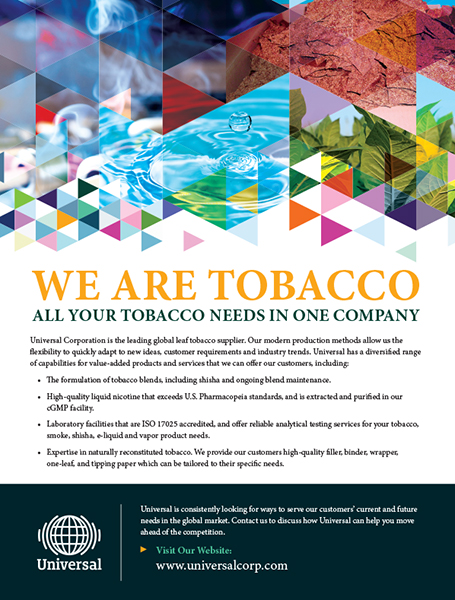Filling the Gaps
- Cheryl Olson Print Edition Regulation
- July 1, 2021
- 0
- 1
- 12 minutes read


The FDA gifted you a PMTA deficiency letter … what’s your strategy?
By Willie McKinney and Cheryl K. Olson
“I read it. And I thought it was over.”
Anne* held the letter she’d just pulled from the brown and white UPS Express envelope marked U.S. Food and Drug Administration. She recalled last September’s frantic scramble to submit a premarket tobacco product application (PMTA) to keep her specialty vape product on the market. Her little team did the best they could to meet the deadline; she knew there were gaps.
Now the FDA’s review of her product had reached a new milestone, marked by the small all-caps header at the top of the letter: DEFICIENCY. “Additional information is needed for FDA to make a determination,” it said.
She stared, speechless, at the 25 pages of highly technical questions—what was HPHC? Puff topography? Abuse liability?—that she had 90 days to answer.
Hundreds of companies, big and small, submitted PMTAs to comply with a court-ordered Sept. 9, 2020, deadline and to keep their novel tobacco products on the market. At a June 11 virtual meeting with the FDA’s Center for Tobacco Products (CTP) Office of Science, we learned that PMTAs for 6.5 million products from over 500 companies have been processed, with more awaiting attention. Given this crush, there are many people waiting and worrying, with the future of their businesses at stake.
This article will help you get your bearings in this confusing review process. We’ll explain how to read and interpret a deficiency letter and how to develop a response strategy. Also, you don’t have to wait for that letter; there are things you could do now to prepare.

So what is a deficiency letter?
Let’s step back and review what happens after you submit your PMTA. First comes an acceptance review, typically a low administrative bar to clear. Does the product fall under the CTP jurisdiction? Is your application in English? Does it contain an Environmental Assessment? If it’s all yes, you’ll get an acceptance letter.
Then comes filing. This involves a preliminary scientific review that ensures the application contains all the items under section 910(b)1 of the Family Smoking Prevention Tobacco Control Act. If it does, you’ll get a filing letter. Your application will move into phase three: substantive review. A team of specialists evaluates the scientific information and data in your application. If there are gaps or questions, the FDA can ask for more information to help them make a marketing authorization decision. That request comes in the form of a deficiency letter.
Not everyone gets one. But at the June 11 meeting, Office of Science director Matt Holman said the FDA has issued “many” deficiency letters.

Should I feel happy or panicked?
If you, like Anne, have a deficiency letter in hand, the answer is both. You should feel excited because you’re well on your way; the FDA has given your application a pretty through review. You should feel nervous because you have 90 days to respond. You’ve got to get cracking!
How you feel will also depend on what they’re asking you. If, whether by strategy or necessity, your application was light on data, you may get 25 or 30 technical questions. FDA staff need all of that information to finish their evaluation of your application. If you don’t supply it, their decision is easy.
Many companies were brand new to this regulatory process and invested just enough in their PMTAs to pass the first two phases of review. If that was your strategy, it may not have been a bad one.
Some people in the tobacco products industry felt the FDA did not want any of these products on the market. They believed the PMTA process was designed for failure. If that’s your fear, and you have a lump sum you’ve made sitting in the bank … do you spend it on expensive tests and studies for an unknown process with an agency that may not like you? Or do you just dip a toe in and see what the response is?
One client we know said, “I’m not in this for the money. I was a smoker.” The vape product he developed changed his life and the lives of friends and neighbors in his town. So he concluded the PMTA was worth the investment on principle despite the uncertain return.
But as Anne found, when you get that deficiency letter, there’s no way you can respond on your own. This is a communication from a team of FDA experts, saying what they need from a scientific perspective. You have to decide whether to invest in your own team of experts to address these questions or to say, “I had a good run,” pack up and be done.
The key point is that you will have 90 days to respond. The FDA has made it clear that during this crunch time, they will send only one deficiency letter. Ninety days is not a lot of time, especially if the letter is requesting additional data—that means new studies and tests.
Can you get an extension? Maybe. It’s at the FDA’s discretion whether to grant one. It is likely that your odds get better if you can give a rationale for the extension by explaining in detail the work you’re doing to fill those gaps.

What’s the best way to answer questions raised in my deficiency letter?
Both what you say and how you say it are important. First, your narrative. A PMTA is an opportunity to explain to the FDA why having your product on the market is appropriate for the protection of public health (APPH); it’s essentially storytelling supported by data.
Don’t just contact a lab, get pages of numbers and toss them at the FDA, saying, “We include the data you requested.” You need to understand what data you need, what it shows and how it supports your APPH story. For example, highly variable product data could suggest that you don’t have control of your manufacturing process.
Second, set the right tone. As the CEO at a company one of us worked for told the FDA, “We may disagree. However, we will not be disagreeable.” That helped build rapport.
FDA staff deserve respect for their expertise and dedication. But they are human too. They may make a statement about your product that is wrong (especially given the plethora of PMTAs received). Respectfully making them aware of their error is perfectly acceptable.
Do I have to wait for my letter, or can I respond proactively?
Prepare in advance and avoid a panicked sprint against that 90-day clock. You may already have a pretty good idea of where your PMTA was lacking. You can check FDA guidance documents for more clues (see “Perception and Intention Studies,” Tobacco Reporter, February 2021, and “Gold Nuggets,” Tobacco Reporter, March 2021). Make sure you’ve done enough to address sensitive issues, such as flavors, youth access, acceptability of ingredients and the ability to switch smokers to your product. Get expert feedback to identify gaps; give priority to filling the ones that take time to address. Then, when your letter comes, the workload will be manageable. And you can get some sleep.
However, there are no guarantees. This is not a check-the-box exercise. The FDA has made it clear that getting authorized depends on both the information in your original PMTA and your response to questions. If you’ve made a solid data-based case that your product is APPH, the agency will probably come to that conclusion too. If you don’t give them what they need to evaluate, they can’t.
As of this writing, everyone is still somewhere in the process; FDA had not issued any marketing authorizations for PMTAs submitted in September 2020. But if you haven’t heard about acceptance of your application soon after you read this (by mid-July to late July), reach out to the CTP for an update.
*A pseudonym
Common PMTA Gaps Raised in Deficiency Letters
As consultants, we’re seeing some patterns in the letters our clients receive. Here’s what your PMTA may be missing:
- Behavioral science: Perception and intention studies and actual use studies. Confused about what the FDA wanted, many companies submitted marketing research data, information on their product category (e.g., consumer perceptions of vaping instead of views on their vape) or just skipped these parts.
- HPHC (analytical chemistry): A common oversight was testing liquids for toxicants but not testing the aerosol.
- Limited toxicology review: Either not enough tests or not good enough explanations to show that it’s OK to inhale the ingredients (e.g., there are no carcinogens, or they’re at very low levels).
- Proof of action: Many PMTAs we’ve read talk about great stuff people do to make their product and to keep it out of the hands of youth. But it’s all talk. They provide no certificates of analysis or data to support what they say. You need details and “teeth.” For example, how and when will you monitor youth purchase attempts? And what are the penalties for failure?


